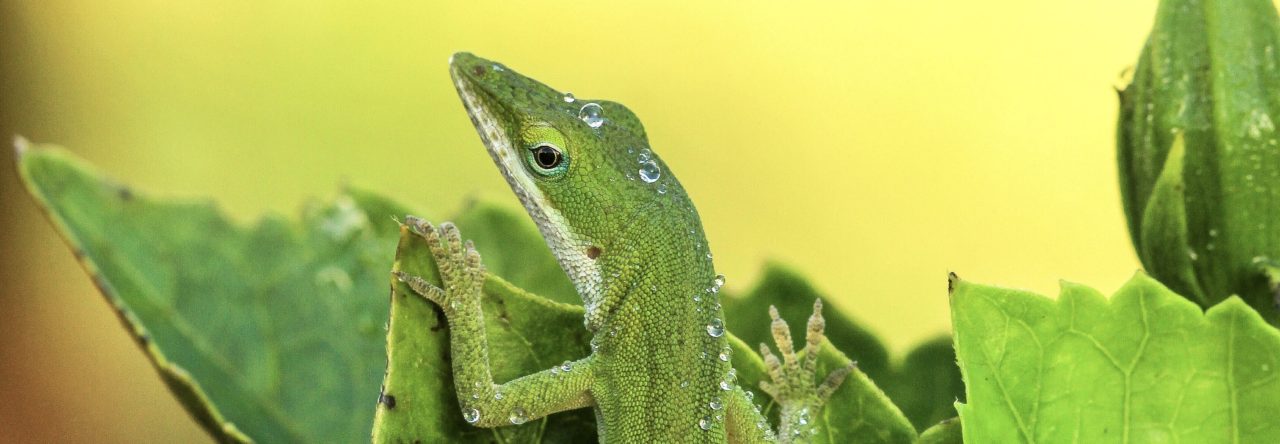Mark Catesby was a famous wildlife artist who preceded Audubon by 100 years. He is best known for The Natural History of Carolina, Florida, and the Bahamas Islands, which is the subject of an article, “Catesby’s Gallery: A Trailblazing Naturalist in the New World,” in the February, 2011 issue of Natural History magazine. The article has reproductions of a number of his paintings, mostly birds, but also plants a crab and… “in a whimsical painting, Catesby shows a Jamaican Anolis lizard, splay-legged and getting a toehold on leafy sprigs of a mainland tree, the sweet gum (Liquidambar styraciflua).” Elsewhere, the article comments that the pairing of the Jamaican anole with a Carolina sweet gum was “seemingly random.” More importantly, what is the anole? My guess is a female A. garmani. But, the color might also be consistent with an A. grahami aquarum. Thoughts?
(p.s. Thanks to Pops for pointing out this article to me)
- Evolution in Real Time on Lizard Island - March 23, 2025
- Spider Snags Adult Anolis osa - March 22, 2025
- An Homage to the Green Anoles of New Orleans - March 21, 2025



Kevin de Queiroz
I also saw the Natural History article, but I was dubious about the identification of the lizard as a Jamaican anole. I looked into this a bit, and in the text accompanying that illustration in Catesby’s Natural History of Carolina, Florida, and the Bahama Islands he identifies the lizard as Lacertus viridis carolinensis, The Green Lizard of Carolina. There is a very similar (but not identical) illustration by Catesby in The Royal Collection (England) that identifies the lizard, this time with a red dewlap, as a Jamaican anole. In addition, there is a publication (McBurney 1999) on the collection of Catesby’s watercolors in the Royal Collection, to which the second illustration belongs, that identifies the lizard specifically as Anolis garmani. I’m still trying to track down the source of the identification of the lizard in the second illustration as a Jamaican anole. In any case, I think it’s safe to say that 1) the lizard in the first illustration (the one in the Natural History article that is reproduced on this webpage) is Anolis carolinensis (and thus its pairing with a sweet gum is not at all whimsical), and 2) the lizard in the second illustration matches Anolis carolinensis better than it does Anolis garmani in terms of dewlap color (and size).
The second illustration can be seen at: http://www.royalcollection.org.uk/egallery/object.asp?maker=11605&object=926016&row=8
Unfortunately, the misidentification in the NH article has been perpetuated all over the web.